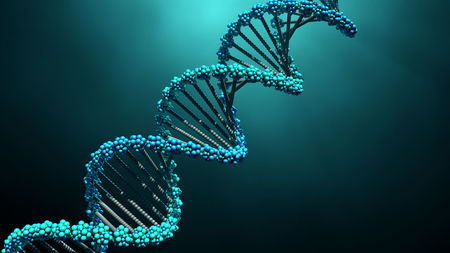A team of researchers at Scripps Research have discovered that a DNA-RNA mix began the first life form on our planet.
Our World is brimming with mysteries and for most of the time we remain curious pertaining to the origin of the first life on Earth, aren’t we? Those science classes must be reminiscent of when we all might have quite enthusiastically participated with our friends to discuss how and when did the first life form originated on our planet.
Well, if those science classes didn’t truly ease our curiosity, a team of scientists at Scripps Research might have something to offer on the origin of various life-forms on Earth.
A group of scientists and researchers including Indian origin scientist Ramnaryanan Krishnamurthy, associate professor of chemistry at Scripps Research, have found that the presence of a significant compound on the planet before the origin of life could have triggered this process. The compound called Diamidophosphate (DAP) did play a crucial role in binding the tiny elements of DNA called deoxynucleosides into strands of primordial DNA.
The research which was published in the journal Angewandte Chemie, has cited that both the DNA as well as RNA did originate simultaneously as a product of similar chemical reactions while the mixes of both the compounds could have given rise to the formation of early lifeforms.
The single-stranded RNA or ribonucleic acid carries vital instruction from DNA as it is present in all the cells ultimately leading to the synthesis of proteins. This discovery has also furthered the efforts of scientists to gather and discover a much wider premise of information regarding the early days of life-forms.
In addition to this, the discovery will also help in advancing the various studies related to Chemistry and Biology which was mostly based on hypothesis rather than tackling the question pertaining to the field of origin of life-forms. Moreover, the hypothesis based on RNA claims that DNA was created by RNA life-forms, and eventually, it was RNA that appeared first.
Considering the level of research in the present scenario, scientists are skeptical of the RNA-based life from processes in the world without enzymes. Such dubious skepticism has arisen a volley of questions to be answered as a strand of RNA can attract other building block RNA to bind together and form a mirror image strand of sorts. These new strands can indeed get separated out of the original template and can start the same process of binding and mirror-image strand formation of their own. This self-replication process seems to give birth to new life forms.
But the problem is that these strands of RNA can quite effectively bind to other strands whereas it is difficult for them to split apart from the original strand. In modern-day life forms, such action takes place due to the formation of enzymes that are present because of a living organism. Therefore, it is highly unclear as of now, how such a process could take place during the early period of formation of life forms on the planet.
Further, Scientist Krishnamurthy and the team of researchers have propounded that such separation of different RNA strands might have happened due to chimeric molecular strands that are composed partly of DNA and RNA molecules. Such composition could lead to less intense binding of the particles and hence they get separated out easily.
Scientists are further hopeful that this discovery might have its practical application in COVID-19 tests across the world which is based on an artificial synthesis of RNA and DNA molecules. As this synthesis is largely enzyme-based, the test also poses challenges and is indeed quite fragile. With the hypothesis of ‘chimeric’ molecular strands – enzyme-free formation of DNA and RNA could lead to the efficacy of these tests.

